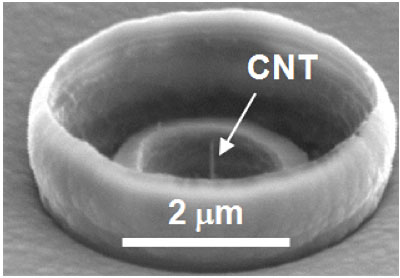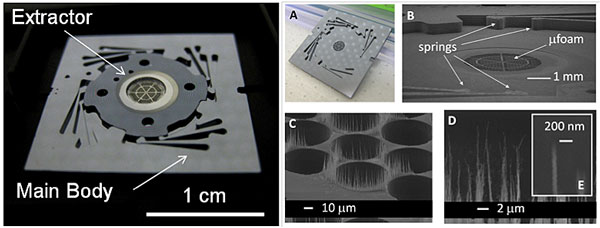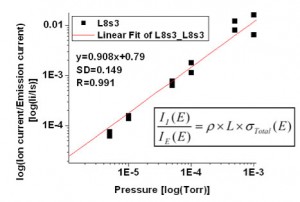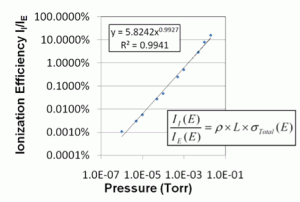
The field factor β relates the electric field at the tip surface to the applied gate voltage and it is to first order equal to the inverse of the emitter tip radius r. Field emission cathodes have a faster response than thermionic cathodes because the time lag in a thermionic source is controlled by its thermal inertia, while the time lag in a cold cathode is set by the RC time constant involved in charging the electrodes. Cold cathodes that use MWCNTs as field emitters are ideal to implement EIIs for portable mass spectrometry because CNTs have large field factors due to their nano-scaled diameters and very high aspect-ratios. In addition, the remarkable physical properties and good chemical resistance of CNTs address the back-ion bombardment-related and oxygen-related reliability issues in EIIs.

We have developed two distinctive CNT-based electron impact ionizer technologies: (i) massive arrays of double gated VACNFs using a closed (i.e., well-like) architecture (Fig. 2), and massive sparse forests of MWCNTs using an open (i.e., no dielectric between adjacent MWCNTs, gate is effectively hovering on top of the field enhancers) architecture (Fig. 3). The doubled-gated well architecture ionizers were designed to emit current with very low voltage. These devices can turn-on (emit more than 10-11 A) with as little as 24 V vs. the typical 100 V startup voltage of the open architecture ionizers. However, the open architecture ionizer was designed to produce orders of magnitude more current by visibly augmenting the array fabrication yield (number of emitters that work) through the use of a hovering gate structure. Both devices are capable of producing ions at mtorr-level pressure (Fig. 4, Fig. 5), although we have demonstrated better performance using the open architecture: we have shown orders of magnitude more electron current (mA-level), higher pressure operation (22 mtorr), and higher ionization efficiency (~20%) than the double-gated closed architecture.


